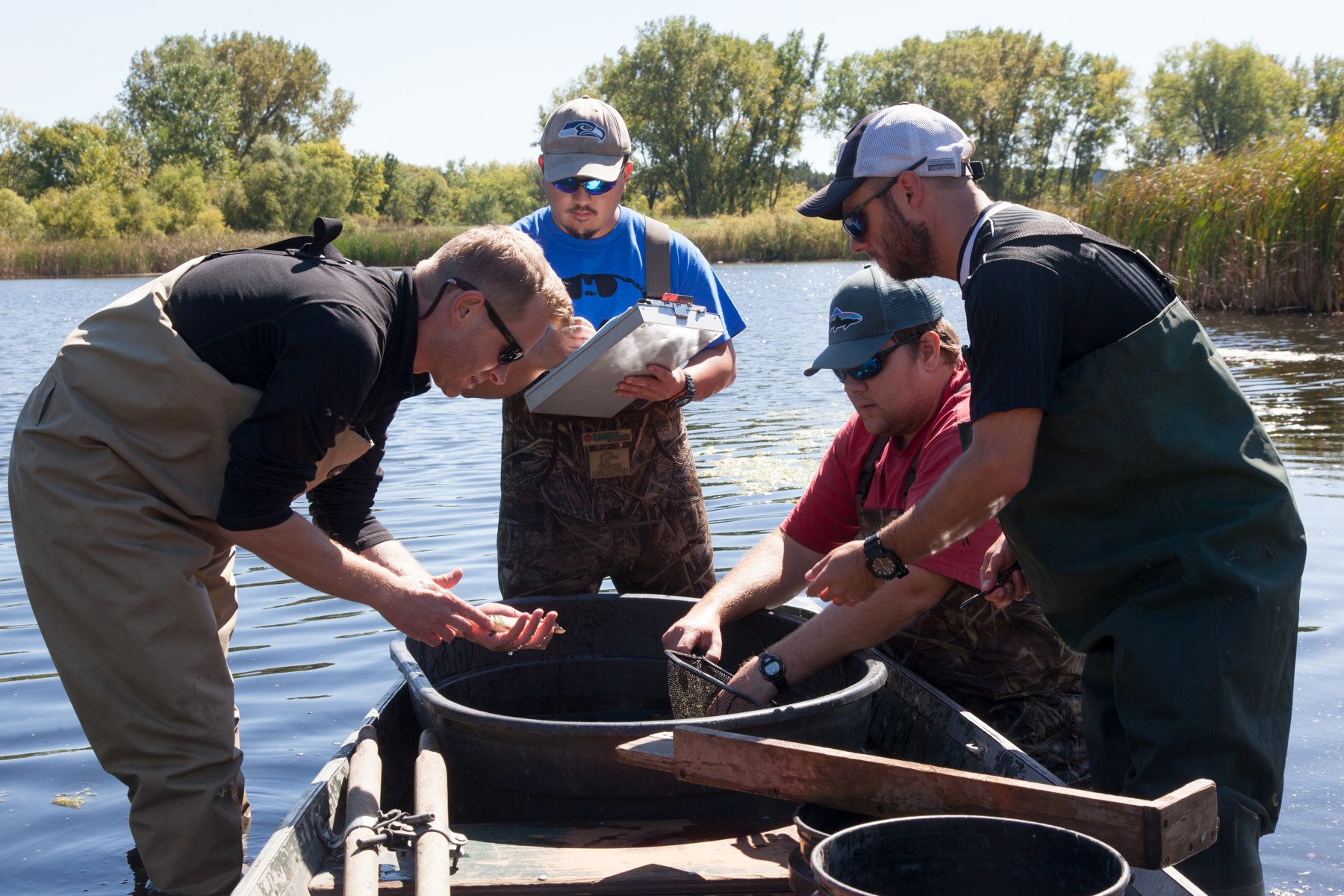
Recruitment Surveys
Trapnet Surveys
Common carp cannot successfully reproduce in all lakes. In fact, their eggs and larvae can often survive only is shallow marshy areas that have few native fish, or in lakes that winterkill. Knowing the locations of carp nurseries within your system of lakes is of critical importance. We conduct trapnet surveys to determine which lakes or marshes function as carp nurseries. We also measure all fish caught during our trap net surveys. This is valuable to not only identify nursery lakes for young of year carp, but also to get an idea of the fish community in each location.
Aging Analyses
Because carp are long-lived (often several decades) one can learn a lot about their history and what makes them successful in particular lakes by conducting ageing analyses. The main information we are looking for is how many age classes are present in the population. Populations comprised of numerous year classes are more difficult to manage because their young can survive during most years. However, populations comprised of only 2-3 year classes spaced several years apart are much easier to manage because natural processes limit their reproduction in most years.
We use otoliths (inner ear bones that form annual growth rings) to age the carp.
At right, top: An example of otoliths removed from an adult carp.
At right, left: An example of a cross section under a microscope. Notice the evident layers that correspond to years of growth in this otolith.







